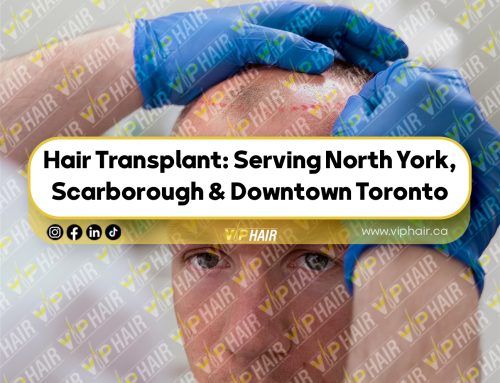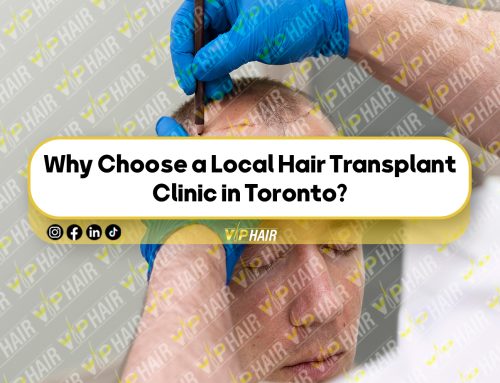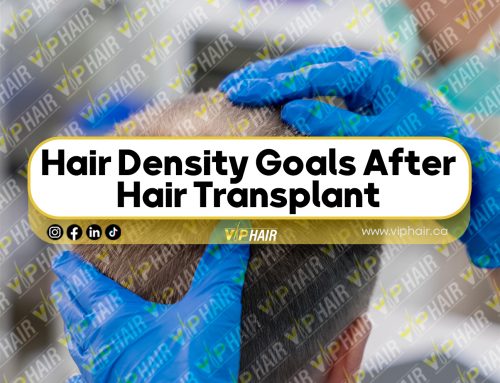Introduction: A New Era of Hair Restoration
Hair loss can be emotional. It’s more than a cosmetic concern—it can affect confidence, self-esteem, and even how you show up in the world.
But thanks to cutting-edge advancements in hair transplant technology, 2025 has brought more refined, natural-looking, and long-lasting solutions than ever before—especially in a world-class city like Toronto.
Whether you’re just starting your research or you’re ready to take the plunge, this complete guide will walk you through everything you need to know about getting a hair transplant in Toronto in 2025—from the latest techniques to real recovery tips, results timelines, and cost expectations.
What Is a Hair Transplant?
A hair transplant is a minimally invasive medical procedure where healthy hair follicles are extracted from areas with dense hair (usually the back or sides of the scalp) and implanted into thinning or bald areas.
The goal? To restore natural hair growth, permanently—using your own hair.
The most popular modern methods in 2025 include:
-
FUE (Follicular Unit Extraction)
-
DHI (Direct Hair Implantation)
-
FUT (Follicular Unit Transplantation) – used less frequently today
Each method has its own pros and cons, which we’ll explore shortly.
Why Hair Transplants Are More Popular Than Ever in 2025
In 2025, hair restoration has evolved into an art-meets-science discipline. Thanks to technology like robotic assistance, micro-punch tools, and platelet-rich plasma (PRP) integration, patients now enjoy:
- More natural-looking results
- Virtually undetectable scarring
- Shorter recovery periods
- Higher graft survival rates
- Personalized treatment planning
And with social stigma fading, both men and women in Toronto are embracing hair restoration earlier and more confidently than ever before.
The Most Advanced Techniques Used in Toronto Clinics Today
FUE (Follicular Unit Extraction)
The gold standard in 2025, FUE involves removing individual hair follicles one by one using a micro-punch device and implanting them in thinning areas.
Why patients love FUE:
-
No linear scar
-
Minimal downtime
-
Great for beard or eyebrow transplants too
-
Suitable for most hair types and stages of loss
DHI (Direct Hair Implantation)
A refined version of FUE, DHI uses a special implanter pen (like the Choi Pen) to extract and implant follicles in one step—no need to create incisions beforehand.
Why it’s trending in Toronto:
-
More precision in hair angle and density
-
Faster healing
-
Preferred for frontal hairlines and temple work
FUT (Follicular Unit Transplantation)
FUT, or the “strip method,” involves removing a thin strip of scalp to harvest follicles, then dissecting them and implanting.
Why some still choose FUT:
-
Often more grafts in one session
-
May be cost-effective
-
Still useful for advanced hair loss
Though less common in 2025, it remains an option in select cases, especially for men with large bald patches and tight budgets.
Who’s a Good Candidate for Hair Transplantation?
You may be a perfect candidate for a hair transplant in Toronto if:
- You have permanent hair loss (like androgenetic alopecia)
- You have a sufficient donor area
- Your hair loss is stable (not aggressively progressing)
- You’re in overall good health
- You understand the process takes time for full results
Hair transplants don’t work well for individuals with:
-
Alopecia areata (autoimmune)
-
Severe scarring in the scalp
-
Unstable hair loss (still shedding rapidly)
Your Toronto-based hair transplant clinic will do a detailed evaluation, including digital scalp analysis, to determine eligibility.
What to Expect During the Procedure
Let’s walk through a typical hair transplant experience in 2025, step-by-step.
Consultation
-
A personalized assessment of your scalp
-
Discuss goals, density, hairline shape, and method
-
Receive your custom quote and timeline
Preparation Day
-
Bloodwork (sometimes PRP will be prepared from your own plasma)
-
Local anesthesia is administered
-
Hair is trimmed for easier graft handling
Extraction Phase
-
Using either FUE or DHI tools, follicles are gently removed from the donor area
-
Done carefully to minimize damage and preserve graft quality
Implantation Phase
-
Hairline is mapped out for balance and natural flow
-
Follicles are implanted with micro precision
-
The entire process takes 4–8 hours depending on graft numbers
Recovery: What Happens After the Procedure?
One of the best things about modern hair transplants is the easy, low-maintenance recovery.
In the first 72 hours:
-
Slight redness, swelling, or tenderness is normal
-
Avoid touching or washing the scalp
-
Sleep elevated to reduce swelling
After 1 week:
-
Tiny scabs form and fall off naturally
-
Most patients return to work in 3–5 days
-
Donor area heals quickly (especially with FUE or DHI)
After 1 month:
-
Some transplanted hairs will shed—totally normal!
-
This “shock loss” makes room for new growth
After 3–6 months:
-
New hair begins to grow
-
You’ll notice improved density, shape, and coverage
After 9–12 months:
-
Final results are visible
-
Hair behaves and grows like normal
-
You can cut, color, or style however you like
Cost of Hair Transplant in Toronto (2025 Guide)
The cost of hair transplant in Toronto varies based on:
-
Number of grafts
-
Technique used (FUE, DHI, FUT)
-
Experience of the medical team
-
Clinic location and reputation
Average price in 2025:
Between $5,000 to $12,000 CAD
Some advanced DHI or combination sessions may go up to $15,000+
Many clinics now offer payment plans and interest-free financing to make the procedure more accessible.
Female Hair Transplants: Yes, It’s for Women Too!
In 2025, more women than ever are choosing hair restoration for:
-
Thinning hairlines
-
Postpartum hair loss
-
Stress-related shedding
-
Hormonal imbalances
-
Scarring alopecia (in specific cases)
Toronto clinics are well-equipped to perform female-friendly procedures with discretion, care, and respect for aesthetic goals.
Why Choose a Toronto Clinic?
Toronto is home to some of the most experienced and innovative hair transplant specialists in North America. Choosing a trusted clinic here means you benefit from:
-
Internationally trained surgeons
-
Advanced tools and AI-assisted mapping
-
Multicultural sensitivity (experience with different hair textures)
-
World-class patient care and follow-up
-
Proven track record of excellent results
What Makes a Hair Transplant Look Truly Natural?
The difference between a good transplant and a great one comes down to:
-
Natural hairline design
-
Graft placement angle and depth
-
Even density distribution
-
Matching the curl, color, and thickness of your native hair
-
Artistic vision by the injector or surgeon
This is why your choice of clinic matters deeply. You don’t just want hair—you want hair that looks like you never lost it.
Final Thoughts: Reclaiming Confidence, One Follicle at a Time
If you’ve been staring at your hairbrush or mirror and wondering if it’s too late to feel good about your hair again—know this: you have options.
In 2025, hair transplants in Toronto are more effective, natural, and empowering than ever. Whether you’re a man tired of receding temples or a woman seeing thinning at the crown, the right team and the right method can help you restore your hair—and your confidence.
Ready to Take the Next Step?
At BBL Toronto, our trusted team of certified professionals offers advanced FUE and DHI hair transplant procedures with discreet care, artistic precision, and long-lasting results.
Book your free consultation today and let us show you what’s possible in 2025. Your hair transformation—and your confidence—starts here.






Leave A Comment